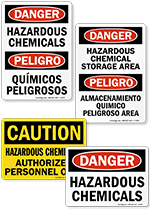Acetone: History and Hazards
 Acetone, (CH3)2CO, is a common solvent, first discovered by alchemists during the Middle Ages, where it was known as “spirit of Saturn.” In 1836, its chemical structure was determined by chemists Jean Baptiste Dumas and Justus von Leibig. In previous eras it was made from the distillation of starches. A key component in explosive manufacture during the First World War, acetone was so critical to the war effort that the British government paid schoolboys to find horse chestnuts to distill into acetone. Acetone is usually derived from fossil fuels in the modern era, by the petrochemical industry.
Acetone, (CH3)2CO, is a common solvent, first discovered by alchemists during the Middle Ages, where it was known as “spirit of Saturn.” In 1836, its chemical structure was determined by chemists Jean Baptiste Dumas and Justus von Leibig. In previous eras it was made from the distillation of starches. A key component in explosive manufacture during the First World War, acetone was so critical to the war effort that the British government paid schoolboys to find horse chestnuts to distill into acetone. Acetone is usually derived from fossil fuels in the modern era, by the petrochemical industry.
In addition to its common household uses, such as a cleaner and nail polish remover, acetone is used as an industrial degreaser, in the pharmaceutical industry, and in medicine, especially in dermatology. (Acetone mixed with alcohol is a common ingredient in skin peels.)
Acetone is not a carcinogen or a mutagen. Rather, its major hazard is its flammability. Acetone vapors are extremely flammable, and it must be carefully stored away from heat sources if used at the consumer level. An especially dangerous hazard results if acetone is combined with hydrogen peroxide; that mixture produces acetone peroxide, an unstable high explosive compound commonly used by terrorist groups. (Industrial and military users generally use safer, more stable explosives, such as TNT, Semtex, or ammonium nitrate-based explosives.)
Secondary hazards are generally limited to irritation from skin contact, eye contact, inhalation or swallowing. As anyone who has dealt with nail polish remover can tell you, the fumes can make you light-headed. Use protective gear as appropriate, including gloves, splash goggles, and vapor respirators.

Category: Resources











